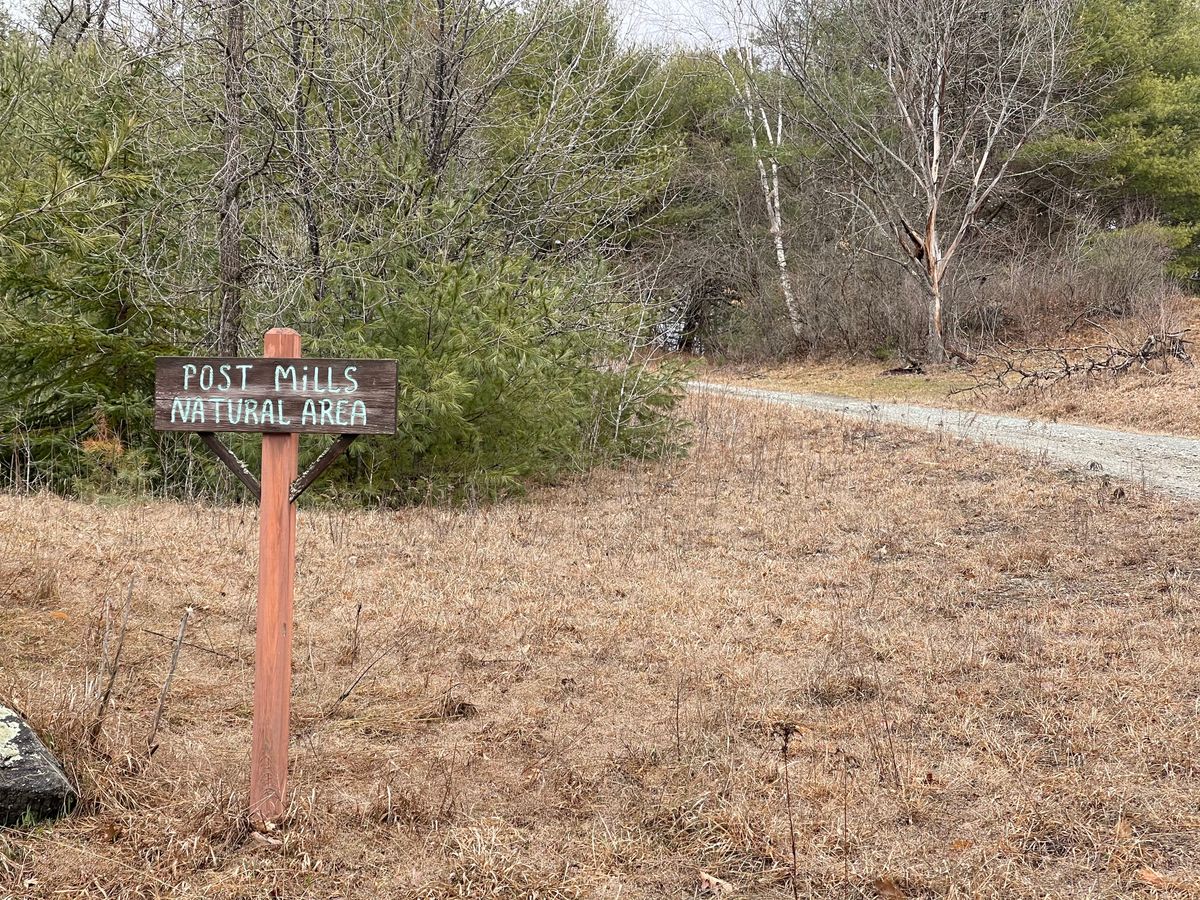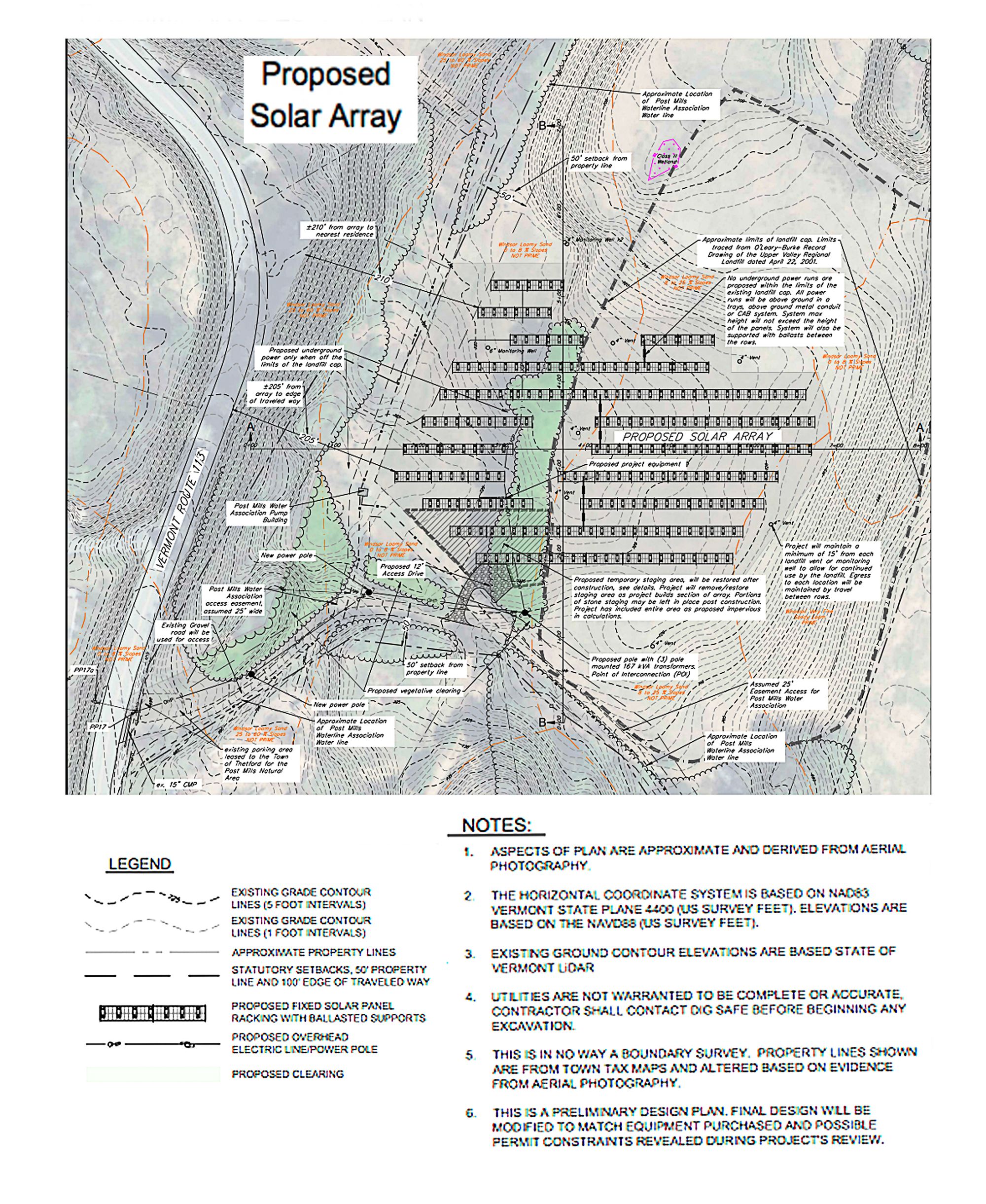Water woes in Post Mills (Part 2)
Will the Post Mills landfill get a new owner?

Read Part 1 here.

Presently the old landfill in Post Mills, the former Upper Valley Regional Landfill or UVRL, might seem an abandoned property. The former owner passed away and did not bequeath it to anyone. So by an agreement with the former landfill company and other stakeholders the State assumed responsibility. There was a one-time deposit of settlement money into a fund that the State is drawing on to maintain the cap and pay for water testing twice a year. At the end of 2020 the fund was at roughly $170,000 and the State was charging about $5,000 a year. The fund would have lasted a little over 30 years before the added expense of PFAS testing, but now it may run out sooner.
At the request of the Thetord Energy Committee and the Selectboard, the Green Mountain Economic Development Corporation (GMEDC) is working with the State and the heirs of the former owner to take ownership of the landfill. The goal is to lease this open, sunny space to the solar developer Norwich Technologies. There are plenty of precedents for this. Around the country many capped landfills, as well as the capped Elizabeth Mine in Thetford/Strafford, are home to so-called floating solar panels that don’t punch holes in landfill caps. GMEDC proposed to locate the solar project on the southwestern end of the landfill parcel where it will not be visible from the road. Roughly half of the solar panels will be sited on the landfill cap.
The State of Vermont encourages the re-purposing of landfills and other brownfields to productive uses through its Brownfields Reuse and Liability Limitation Act (10 V.S.A. §6641-§6656), also known as BRELLA. BRELLA protects those who intend to purchase a brownfield property, provided they did not cause the pollution, and on the condition that they conduct corrective action at the site to support its redevelopment. The new owner is also protected if standards for hazardous materials change, if new contamination is found, or if previously unregulated chemicals become defined as hazardous and hence become regulated.
Achieving protection from liability is a multi-step process for the buyer of a brownfield. The Department of Environmental Conservation (DEC) has to approve the buyer’s “work plan” for investigating and defining the “nature, source, degree and extent” of the contamination and the risks to human health and the environment. That leads to a Phase 1 Environmental Site Assessment. All the data is then summarized into a site investigation report to the DEC. Shawn Donovan, the DEC Environmental Analyst for the Site Management Section and Brownfields Program, indicated that, for the Post Mills landfill, the study would adhere to the “I-Rule” (aka Investigation and Remediation of Contaminated Properties Rule). Among other things, the "I-Rule" requires a long term plan for contaminant monitoring. It is the intent of this investigation to delineate the “plume” of contamination that is moving in the aquifer under the landfill.
If the DEC approves the report, the applicant would then submit a Corrective Action Plan (CAP) for cleanup. The plan should consider the type of redevelopment proposed for the brownfield; the redevelopment should not add more contamination. In their application to BRELLA, GMEDC stated that “given the State’s work at the landfill, CAP elements are expected to include institutional controls and landfill-focused design elements for the solar project.” Once the CAP requirements have been satisfied, GMEDC would receive a Certificate of Completion (COC). It is this document that protects the new owner from liability caused by future regulatory changes, discovery of previously unknown contaminants, claims from past owners, and restoration obligations under the Natural Resources Damages Assessment Program. Only when the COC is obtained will GMEDC go ahead and acquire the landfill property.
This may sound like a lot of costly work, but the State of Vermont is funding at least the first phase of this process.
Will all of these precautions limit the future spread of contamination in the water supply of south Post Mills? And what about the “forever chemicals,” PFAS, that have been detected in some of the monitoring wells? At present, the DEC is monitoring aquifer contamination in a phase known as Post Closure Care, but this is not intended to go on forever — the money that pays for water testing is slowly being depleted. GMEDC has proposed taking charge of the remaining money and investing it to generate income that will keep the fund going. Apart from PFAS, the other volatile organic compounds (VOCs) that pollute the water are slowly degrading. Which is why the state generally expects to cease monitoring closed landfills after thirty or so years.
When monitoring stops, regulation of a closed landfill falls to a Custodial Care Plan. According to a publication from the DEC “… it does not eliminate the obligation for continued management of the property in order to minimize potential exposure. At a minimum this will require maintaining institutional control over the facility and preserving cap integrity and vegetation.“ With regard to water testing, "each site applying for custodial care consideration must successfully demonstrate to the program that they have completed the requirements of their Post-Closure period and that the site poses no future threat to human health and the environment."
Will continued testing for PFAS be included in the Custodial Care Plan? That seems to depend on what the BRELLA process reveals about the “nature, source, degree and extent” of the contamination, and what the risks to human health are. In the best case scenario the “I-Rule” would call for drilling more monitoring wells to fully map the extent of PFAS in the aquifer.
At least the members of the Post Mills Water Association can rest assured that their water is safe. Extensive testing of their 800ft well showed no evidence of hydrological connection to the polluted monitoring wells around the landfill. The Water Association’s well may be slow to recharge, limiting user number to the nine existing hook-ups, but the quality of the water is excellent.
Residents have pointed out that a plentiful source of clean water exists in the slopes of nearby Tug mountain. Could a village water system be developed? Although it is a formidable and expensive proposition, it might, in the long-term, be in the best interest of south Post Mills.
